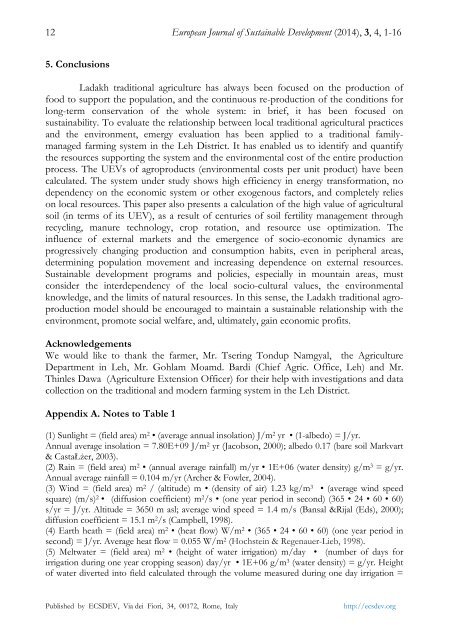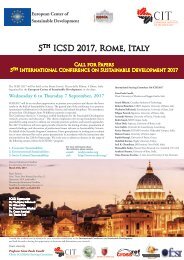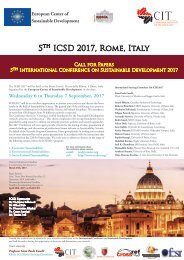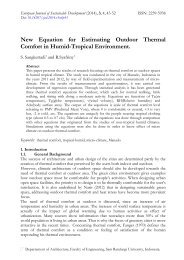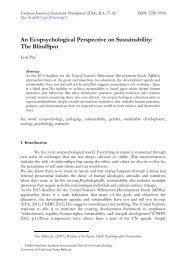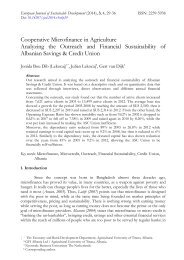Emergy evaluation of a traditional farming system. Case study: Leh District (Ladakh - Indian Trans-Himalaya)
Ladakh traditional farming system has been included on the F.A.O. list of possible “Globally Important Agricultural Heritage Systems”, worthy of being preserved and conserved. The paper describes and assesses cultivation practices in a typical familymanaged farm, located in central Ladakh, analysing how natural resources are exploited, conserved and recycled. Emergy evaluation, an environmental accounting methodology, has been applied to evaluate and compare five staple crop productions: barley, wheat, pea, mustard, and fodder alfalfa. Unit Emergy Values of products (UEV, emergy per unit product, a measure of the environmental production cost) are calculated, taking into account the inputs to production such as water from glaciers, soil fertility, human and animal labour, and more. Results show that the traditional agricultural practices in Ladakh, completely supported by renewable flows, are efficient in the use of local resources. In fact, the UEVs of agroproducts are similar to those of analogous products of conventional agriculture (e.g. 5.27E+05 and 6.64E+05 semj/J for barley and wheat in Ladakh, respectively; 7.37E+05 semj/J for corn in USA), though the inputs of Ladakh agriculture are strongly limited in type and quantity. At the same time, local farmers can create, maintain and rebuild soil functions whose UEV is 1.62E+07 semj/J. Keywords: Ladakh, agrosystem, emergy, environment, sustainability
Ladakh traditional farming system has been included on the F.A.O. list of possible “Globally Important Agricultural Heritage Systems”, worthy of being preserved and
conserved. The paper describes and assesses cultivation practices in a typical familymanaged farm, located in central Ladakh, analysing how natural resources are exploited, conserved and recycled. Emergy evaluation, an environmental accounting methodology, has been applied to evaluate and compare five staple crop productions: barley, wheat, pea, mustard, and fodder alfalfa. Unit Emergy Values of products (UEV, emergy per unit product, a measure of the environmental production cost) are calculated, taking into account the inputs to production such as water from glaciers, soil fertility, human and
animal labour, and more. Results show that the traditional agricultural practices in Ladakh,
completely supported by renewable flows, are efficient in the use of local resources. In fact, the UEVs of agroproducts are similar to those of analogous products of conventional agriculture (e.g. 5.27E+05 and 6.64E+05 semj/J for barley and wheat in Ladakh, respectively; 7.37E+05 semj/J for corn in USA), though the inputs of Ladakh agriculture are strongly limited in type and quantity. At the same time, local farmers can create, maintain and rebuild soil functions whose UEV is 1.62E+07 semj/J.
Keywords: Ladakh, agrosystem, emergy, environment, sustainability
You also want an ePaper? Increase the reach of your titles
YUMPU automatically turns print PDFs into web optimized ePapers that Google loves.
12 European Journal <strong>of</strong> Sustainable Development (2014), 3, 4, 1-16<br />
5. Conclusions<br />
<strong>Ladakh</strong> <strong>traditional</strong> agriculture has always been focused on the production <strong>of</strong><br />
food to support the population, and the continuous re-production <strong>of</strong> the conditions for<br />
long-term conservation <strong>of</strong> the whole <strong>system</strong>: in brief, it has been focused on<br />
sustainability. To evaluate the relationship between local <strong>traditional</strong> agricultural practices<br />
and the environment, emergy <strong>evaluation</strong> has been applied to a <strong>traditional</strong> familymanaged<br />
<strong>farming</strong> <strong>system</strong> in the <strong>Leh</strong> <strong>District</strong>. It has enabled us to identify and quantify<br />
the resources supporting the <strong>system</strong> and the environmental cost <strong>of</strong> the entire production<br />
process. The UEVs <strong>of</strong> agroproducts (environmental costs per unit product) have been<br />
calculated. The <strong>system</strong> under <strong>study</strong> shows high efficiency in energy transformation, no<br />
dependency on the economic <strong>system</strong> or other exogenous factors, and completely relies<br />
on local resources. This paper also presents a calculation <strong>of</strong> the high value <strong>of</strong> agricultural<br />
soil (in terms <strong>of</strong> its UEV), as a result <strong>of</strong> centuries <strong>of</strong> soil fertility management through<br />
recycling, manure technology, crop rotation, and resource use optimization. The<br />
influence <strong>of</strong> external markets and the emergence <strong>of</strong> socio-economic dynamics are<br />
progressively changing production and consumption habits, even in peripheral areas,<br />
determining population movement and increasing dependence on external resources.<br />
Sustainable development programs and policies, especially in mountain areas, must<br />
consider the interdependency <strong>of</strong> the local socio-cultural values, the environmental<br />
knowledge, and the limits <strong>of</strong> natural resources. In this sense, the <strong>Ladakh</strong> <strong>traditional</strong> agroproduction<br />
model should be encouraged to maintain a sustainable relationship with the<br />
environment, promote social welfare, and, ultimately, gain economic pr<strong>of</strong>its.<br />
Acknowledgements<br />
We would like to thank the farmer, Mr. Tsering Tondup Namgyal, the Agriculture<br />
Department in <strong>Leh</strong>, Mr. Gohlam Moamd. Bardi (Chief Agric. Office, <strong>Leh</strong>) and Mr.<br />
Thinles Dawa (Agriculture Extension Officer) for their help with investigations and data<br />
collection on the <strong>traditional</strong> and modern <strong>farming</strong> <strong>system</strong> in the <strong>Leh</strong> <strong>District</strong>.<br />
Appendix A. Notes to Table 1<br />
(1) Sunlight = (field area) m 2 • (average annual insolation) J/m 2 yr • (1-albedo) = J/yr.<br />
Annual average insolation = 7.80E+09 J/m 2 yr (Jacobson, 2000); albedo 0.17 (bare soil Markvart<br />
& CastaŁżer, 2003).<br />
(2) Rain = (field area) m 2 • (annual average rainfall) m/yr • 1E+06 (water density) g/m 3 = g/yr.<br />
Annual average rainfall = 0.104 m/yr (Archer & Fowler, 2004).<br />
(3) Wind = (field area) m 2 / (altitude) m • (density <strong>of</strong> air) 1.23 kg/m 3 • (average wind speed<br />
square) (m/s) 2 • (diffusion coefficient) m 2 /s • (one year period in second) (365 • 24 • 60 • 60)<br />
s/yr = J/yr. Altitude = 3650 m asl; average wind speed = 1.4 m/s (Bansal &Rijal (Eds), 2000);<br />
diffusion coefficient = 15.1 m 2 /s (Campbell, 1998).<br />
(4) Earth heath = (field area) m 2 • (heat flow) W/m 2 • (365 • 24 • 60 • 60) (one year period in<br />
second) = J/yr. Average heat flow = 0.055 W/m 2 (Hochstein & Regenauer-Lieb, 1998).<br />
(5) Meltwater = (field area) m 2 • (height <strong>of</strong> water irrigation) m/day • (number <strong>of</strong> days for<br />
irrigation during one year cropping season) day/yr • 1E+06 g/m 3 (water density) = g/yr. Height<br />
<strong>of</strong> water diverted into field calculated through the volume measured during one day irrigation =<br />
Published by ECSDEV, Via dei Fiori, 34, 00172, Rome, Italy<br />
http://ecsdev.org


